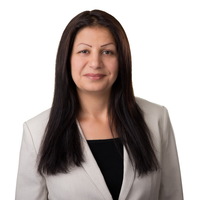Subject to change.

Subject to change.

Fatemeh Zabihollahy is the Lead AI Scientist at the Laboratory Medicine Program at University Health Network. She holds a Master's and PhD in Electrical and Computer Engineering, with a strong background in computer science, biomedical engineering, and the healthcare industry. She has held research positions at Johns Hopkins University and UCLA. Her work focuses on applying AI and machine learning to cancer diagnosis and prognosis, bridging the gap between research and clinical practice.